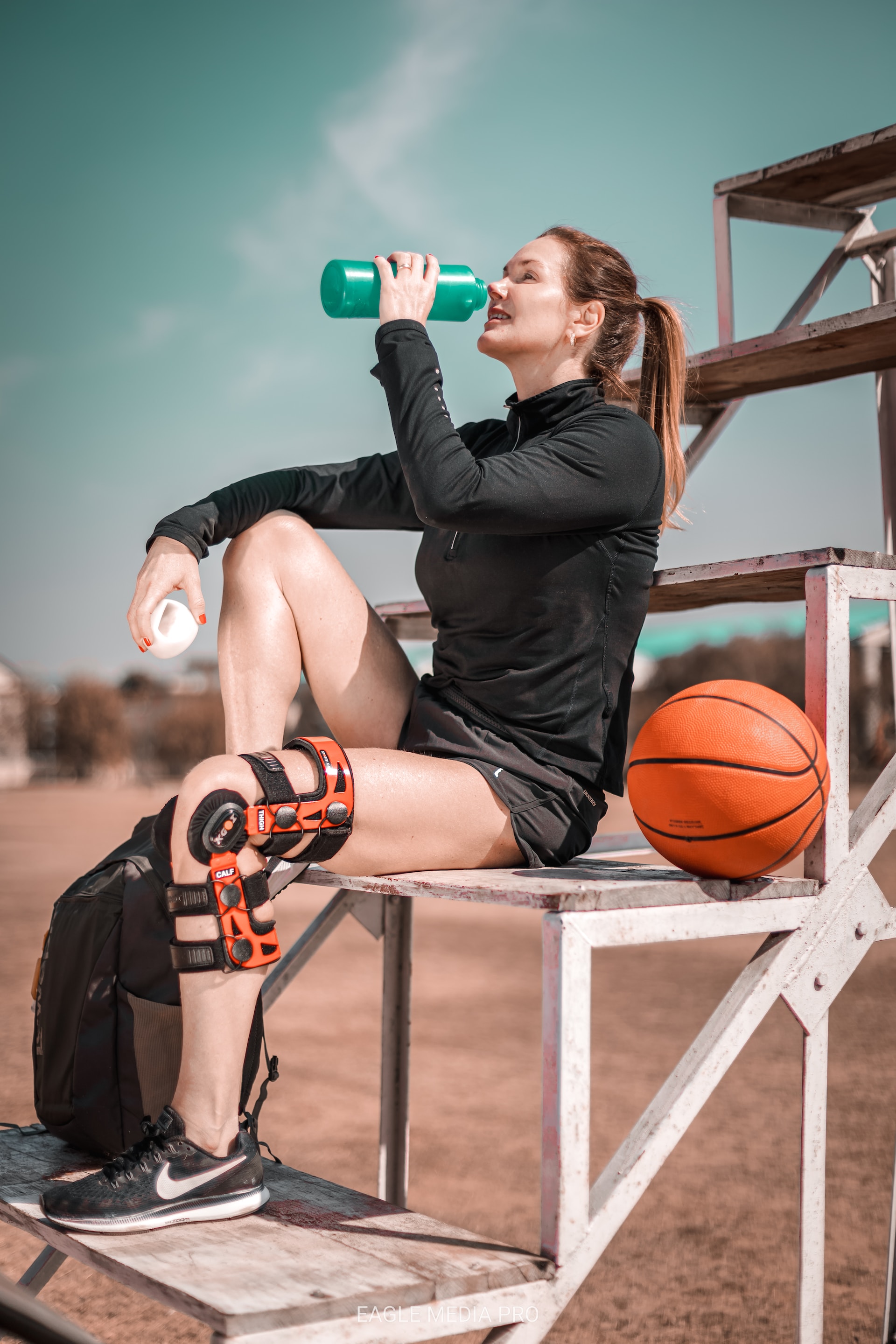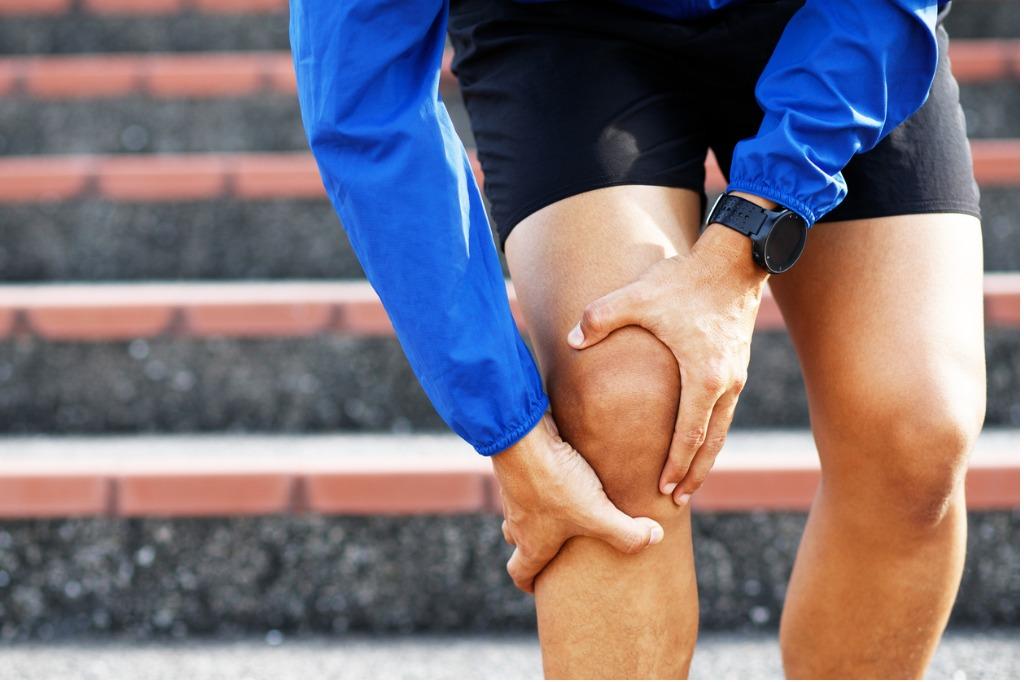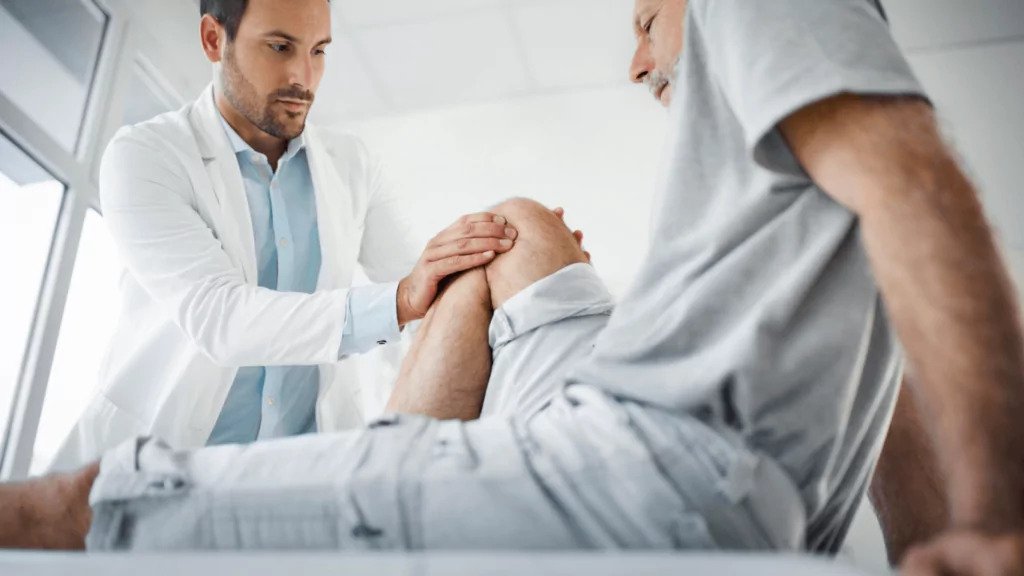
Knee pain is a common issue that can really affect your daily life. Whether it's from an injury, doing too much, or a health issue, finding ways for knee pain reliefis crucial. In this article, we'll explore why knees might hurt, what to watch out for, and different things you can try to get that much-needed knee pain relief.
What Is Knee Pain?
Knee pain refers to the sensation of discomfort or pain in and around the joint connecting the thigh and lower leg. This joint, known as the knee joint, serves as the meeting point for the thigh bone (femur) and shin bone (tibia). As the largest joint in the body, the knee plays a crucial role in bearing and supporting a significant portion of the body's weight during movement.
Consequently, it is prone to frequent injuries. While knee pain can be a temporary and short-lived issue, it also has the potential to develop into a chronic, long-term condition that necessitates professional diagnosis and treatment from a healthcare provider.
Knee pain often exhibits a variable pattern, with instances of discomfort emerging during movement or bending, which typically improves with rest. Some individuals may encounter fluctuations in pain levels throughout the day, with heightened discomfort upon waking in the morning or, conversely, experiencing knee pain at night, particularly following earlier physical activity.
For most cases of knee pain, self-care measures at home can be effective, involving a temporary break from physical activities and the use of over-the-counter (OTC) pain relievers. However, it is advisable to seek professional medical attention if the pain significantly interferes with daily routines or hinders mobility. Consult a healthcare provider if knee pain persists for more than a few days without noticeable improvement.
Possible Causes Of Knee Pain
Your knee is a complicated part of your body. It has strong bands and ropes (ligaments and tendons) that keep the bones in place. There's also a soft cushion (cartilage) under the knee cap that supports and steadies the bones.
If anything goes wrong with these parts, like damage or sickness, it can make your knee hurt. Some usual reasons for knee pain are:
Knee Arthritis
There are different types of arthritis that can make your knee hurt, swell, and limit movement. Some common ones include:
- Osteoarthritis (OA):Happens when the cushioning cartilage wears down, often in people over 50. It might start with a sharp pain when you move.
- Rheumatoid arthritis (RA):This is an autoimmune disease where your immune system attacks your joints, causing pain, swelling, redness, and warmth. The pain often gets better when you're active.
- Gout:Occurs when there are high levels of uric acid, forming sharp crystals in the joint. It can affect the knee, hip, fingers, and especially the big toe, causing severe pain.
- Post-traumatic arthritis:Develops after a knee injury, with lasting damage, instability, or too much wear and tear.
Knee Ligament Injuries
In your knee, there are four main ligaments:
- Medial Collateral Ligament (MCL):It runs along the inside of your knee, towards the middle.
- Lateral Collateral Ligament (LCL):It runs along the outside of your knee, away from the center of your body.
- Anterior Cruciate Ligament (ACL):This ligament runs diagonally inside your knee joint, in front of the PCL. The term "anterior" means it's positioned toward the front.
- Posterior Cruciate Ligament (PCL):It also runs diagonally inside the knee joint but behind the ACL. "Posterior" indicates that it's situated toward the back.
All these ligaments connect your thighbone (femur) to your shinbone (tibia).
Torn Knee Cartilage (Meniscus)
The menisci are strong, "C"-shaped pieces of cartilage in your knee, with two in each joint providing cushioning. A common reason for knee pain is a torn meniscus.
When a meniscus tears, you might hear a "pop." After that, you could experience symptoms that gradually develop, including:
- Stiffness
- Swelling
- Clicking sounds
- Locking sensation
- Catching feeling
In younger people, it's often linked to sports injuries, while in older individuals, the natural weakening of tissues with age makes them more susceptible to tears.
Patellar Tendonitis And Tear
Patellar tendonitis is the inflammation of the patellar tendon, a large tendon that links your kneecap to the top of your shinbone (tibia).
This condition is most common among athletes who engage in a lot of running and jumping. It's often described as a persistent, dull pain that intensifies during physical activity.
In some instances, a weakened patellar tendon can tear. A tear in the patellar tendon can result in:
- Intense pain
- Swelling around the knee
- A sensation of tearing or popping
In severe cases, you might observe a hollow or indentation at the lower part of your kneecap. Walking may become challenging as the knee may give out.
Patellofemoral Pain Syndrome
The most frequent victims of patellofemoral pain syndrome are teenagers and young adults, and it frequently results from exerting one's knee in strenuous activities. These activities include running, squatting, and climbing stairs.
The syndrome can also result from irregular knee alignment or the softening and wearing away of cartilage, a condition known as chondromalacia patella.
Patellofemoral pain syndrome typically causes a persistent, dull ache beneath the kneecap. The pain tends to worsen with frequent bending of the knee or after prolonged periods of sitting. Climbing stairs or standing up may cause popping sensations. While knee swelling and locking are rare with this syndrome, discomfort, and pain are notable aspects.
Other Common Causes
Additional common reasons for knee pain include:
- Baker’s Cyst:This is swelling at the back of the knee joint, often linked to a meniscus tear. It can lead to tightening pain, stiffness, and a visible bulge that worsens with activity.
- Prepatellar Bursitis:Involves swelling of the prepatellar bursa, a fluid-filled sac over the kneecap. It may cause a mild ache and is often a result of frequent kneeling, such as during gardening or laying carpet.
- Iliotibial Band (ITB) Syndrome:This condition involves swelling of the ITB, which consists of thick fibers on the outside of the thigh. It frequently results in overuse and causes aching and burning pain on the outside of the knee joint.
Less Common Causes Of Knee Pain
Less common but significant causes of knee pain involve both injuries and conditions. Injuries comprise:
- Dislocated Kneecap:Typically caused by sharp blows to the knee or twisting, resulting in severe pain in the front of the knee. Buckling, slipping, or catching during movement may also occur.
- Kneecap Fracture:Often caused by a direct blow or falling onto the knee. Symptoms include pain, difficulty straightening the leg, bruising, swelling, and sometimes a visible deformity.
Conditions include:
- Plica Syndrome:Involves irritation of the synovium (joint lining), causing pain in the middle and front of the knee. Worsens with inactivity or specific movements like squatting, running, or kneeling. The knee may make a popping sound when bent.
- Osgood-Schlatter Disease:Typically affects kids between 9 and 14 after growth spurts. It causes pain in the front of the knee, which improves with rest and worsens with activities such as running and jumping.
- Osteochondritis Dissecans:Seen in children, this condition weakens the bone and cartilage due to a lack of blood supply. It can lead to the separation of the knee from the underlying bone, causing pain during activity.
- Knee Joint Infection:Results in significant pain, swelling, warmth, painful movements, and fever. It may be caused by a bacterial infection in the bloodstream.
- Bone Tumor:Very rarely, knee pain can be attributed to a bone tumor. Symptoms include fever, unintentional weight loss, and nighttime worsening of pain.
Treatments Of Knee Pain
The treatment you receive depends on the cause of your pain. It might involve a mix of approaches aimed at easing pain and, whenever feasible, addressing the root issue.
RICE Method For Knee Pain
You can usually manage knee pain at home using the RICE method:
- Rest:Avoid the activity that caused the pain to prevent worsening the injury.
- Ice:Apply an ice pack or cold compress for 15 to 20 minutes every hour on the first day after the injury. After the initial day, you can use ice every three to four hours. Ensure that the ice pack is not directly on your skin; wrap it in a towel or washcloth.
- Compression:Use a compression bandage to reduce blood flow and swelling in the injured knee. A healthcare provider can demonstrate how toproperly apply and wear a compression wrap.
- Elevation:Keep your knee elevated above the level of your heart. Prop it up with pillows, blankets, or cushions for support.
Physical Therapy
Physical therapy is crucial for nearly all orthopedic conditions. A physical therapist will assess your situation and recommend exercises to:
- Boost Strength:Targeting specific muscle groups to enhance overall strength.
- Enhance Mobility:Working on exercises to improve your range of motion and flexibility.
- Facilitate Return to Activity:Create a plan to help you return to your usual level of activity before the injury occurred.
Medications
Medications are frequently employed to relieve knee pain, and in some cases, they can address the underlying issue.
- NSAIDs (Nonsteroidal Anti-Inflammatory Drugs):These are commonly prescribed for knee pain stemming from conditions like arthritis, bursitis, and tendonitis.
- Injections:If self-care measures don't sufficiently manage ongoing pain and swelling, cortisone injections - potent anti-inflammatories - may be administered. They are particularly effective for knee osteoarthritis.
- Other Medications:Depending on the diagnosis, various medications may be recommended. Examples include disease-modifying anti-rheumatic drugs for rheumatoid arthritis, antibiotics for infections, or steroids for gout.
Complementary And Alternative Therapies
Several mind-body therapies can be employed to address knee pain, particularly in cases of knee osteoarthritis. These therapies include:
- Acupuncture
- Yoga
- Tai Chi
Knee Braces
A knee brace provides support and stability to your knee by maintaining proper alignment. Typically constructed from rigid materials like plastic or metal, these braces include cushions and straps that secure around your knee and leg. Your healthcare provider will prescribe the specific type of brace you need and advise on how frequently you should wear it.
Surgery
For most individuals with knee pain, surgery is not the first option. However, your healthcare provider may recommend it if the pain is severe and other treatments haven't been effective. Surgery may be necessary to repair a damaged ligament, address a bone fracture, or manage severe arthritis.
The most common type of knee surgery is knee arthroscopy. In this procedure, your surgeon makes small incisions in the skin around your knee and uses a tool called an arthroscope, equipped with a camera and light, to visualize and repair damage inside the knee joint.
In some cases, a more extensive intervention like knee replacement (arthroplasty) may be needed. During knee replacement, your surgeon replaces the knee joint with an artificial implant, known as a prosthesis. This may be recommended if knee pain significantly impairs your ability to stand, walk, and move.
The type of knee replacement - total or partial - depends on the cause of the pain and the extent of knee damage. Your surgeon will provide information on what to expect during and after the surgery, as well as the anticipated recovery period.
Preventing Knee Pain
Preventing knee pain may not always be possible, especially if it stems from unexpected injuries or health conditions like arthritis. However, taking safety measures during physical activities can significantly reduce the risk of pain. Here are some guidelines:
- Use Appropriate Protective Gear:Wear the right protective equipment for sports or physical activities.
- Listen to Your Body:If your knee hurts during or after physical activity, don't push through the pain. Pay attention to your body's signals.
- Allow Time for Rest and Recovery:Give your body sufficient time to rest and recover after engaging in intense activities.
- Prioritize Stretching and Warm-Up:Before participating in sports or workouts, ensure you stretch and warm up adequately.
- Cool Down and Stretch After Activity:After physical activity, incorporate a cool-down routine and engage in post-activity stretching.
In addition to these measures, follow these general safety tips to further minimize injury risk:
- Keep your home and workspace clutter-free to prevent tripping hazards.
- Use the appropriate tools or equipment at home to reach objects; avoid standing on chairs, tables, or countertops.
- If you face difficulty walking or have an increased risk of falling, consider using a cane or walker for added support.
When To See A Doctor
While not all instances of knee pain require immediate medical attention, postponing care when necessary can result in increased pain and disability. Keep an eye out for the following symptoms:
- Persistent Pain:pain that lasts more than 48 hours.
- Prolonged Inflammation:inflammation that persists for more than 48 hours.
- Reduced Range of Motion:Difficulty moving your knee as freely as usual.
- Instability:Feeling unsteady or unstable when putting weight on the affected knee.
- Signs of Infection:Watch for symptoms like fever, redness, and warmth around the joint.
Seek immediate medical care if:
- Deformed Joint:If the joint looks misshapen.
- Audible Popping or Grinding:If the injury was accompanied by a popping or grinding noise.
- Inability to Bear Weight:If you can't put weight on the injured knee.
- Intense Pain:If the pain is severe.
- Sudden Inflammation or Swelling:If there is abrupt and significant swelling or inflammation.
Knee Pain Relief - FAQ
At What Age Do Knee Problems Start?
Whatever pattern the pain has, it is most often not due to arthritis but might be in some people. Osteoarthritis is the most common type of arthritis. It can affect anyone at any age, but it is most common in people over 50.
Is Ginger Good For Knee Pain?
In theory, ginger can reduce the activity of several chemical substances that promote joint inflammation. Results from RCTs assessing its role in treating participants with osteoarthritis found that it has a high safety profile and can have moderately beneficial effects in reducing pain and disability.
How Do I Know If My Knee Pain Is Serious?
Your knee buckles, clicks, or locks. Your knee is deformed or misshapen. You cannot flex your knee or have trouble straightening it all the way out. You have a fever, redness or warmth around the knee, or a lot of swelling.
Wrapping Up
When it comes to making knee pain go away, it's good to know what might be causing it. Taking steps to prevent knee pain and getting help when it's really hurting are both important. By doing these things for knee pain relief, you can work towards having less pain and a happier, healthier life.

